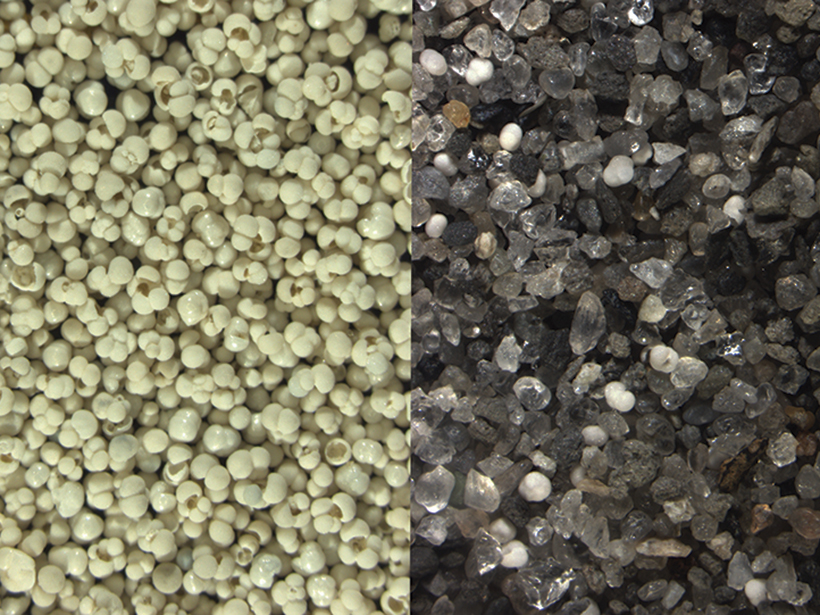Source: Paleoceanography and Paleoclimatology
As temperatures and atmospheric compositions on Earth have varied considerably over the past million years or so, the Northern Hemisphere has experienced large-scale advances and retreats of continental ice sheets at intervals of between 80,000 and 120,000 years. (Currently, the planet is in an interglacial period—when ice sheets are smaller—that began about 10,000 years ago.) These planetary-scale freeze-thaw cycles have pronounced effects on nearly every aspect of the planet’s climate.
In a new study, Barker et al. present a record of North Atlantic sea surface conditions and argue that the relationship between the Atlantic Meridional Overturning Circulation (AMOC)—the pattern of mixing of between surface and deep waters in the North Atlantic—and millennial-scale changes in atmospheric carbon dioxide (CO2) concentrations has remained consistent over the past 800,000 years.
To create the record, the scientists used samples from a sediment core from Ocean Drilling Program Site 983, which is located off the southwest coast of Iceland. They made counts of ice-rafted terrestrial material, such as quartz grains, as well as of Neogloboquadrina pachyderma, a planktic foraminifer that thrives in polar regions, in successive layers of the core.
The authors used changes in the presence of N. pachyderma and the ice-rafted material as proxies for surface ocean conditions and the movement of sea ice to infer patterns of ocean circulation. This information served as an indicator of whether conditions in past intervals were polar or subpolar at Site 983. Because the AMOC is believed to be the main driver of millennial-scale changes in surface conditions (polar versus subpolar), the authors believe they can infer a picture of millennial-scale changes in the Atlantic’s large-scale overturning circulation.
In summary, they report that anomalously cold and icy surface conditions recorded in the core correspond to past periods of weakened AMOC, whereas warmer conditions correspond to stronger AMOC.
The team then compared this new record of Atlantic Ocean variability to atmospheric CO2 changes over the same period, which revealed that the two variables have varied in tandem for the past 800,000 years. Broadly speaking, CO2 levels rise when Atlantic circulation is weak and fall when it’s strong.
The authors also say their results show that it might take thousands of years for the planet’s climate to reequilibrate during deglaciation after each glacial period ends (and before the subsequent interglacial begins). If that’s the case, big spikes in atmospheric CO2 previously observed at the onset of past interglacial periods were, more likely, part of the deglacial process. This scenario would mean that researchers have potentially overestimated the trend of CO2 change during some past interglacial periods. (Paleoceanography and Paleoclimatology, https://doi.org/10.1029/2019PA003661, 2019)
—David Shultz, Freelance Writer
Citation:
Shultz, D. (2019), Atlantic circulation consistently tied to carbon dioxide, Eos, 100, https://doi.org/10.1029/2019EO134269. Published on 25 September 2019.
Text © 2019. AGU. CC BY-NC-ND 3.0
Except where otherwise noted, images are subject to copyright. Any reuse without express permission from the copyright owner is prohibited.

